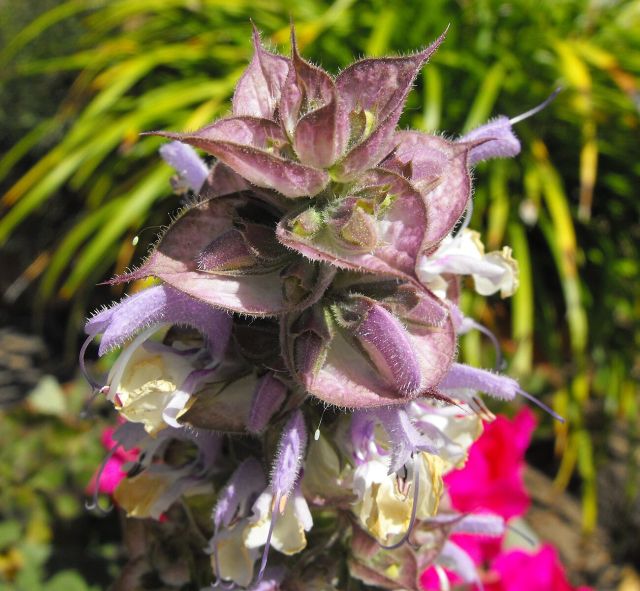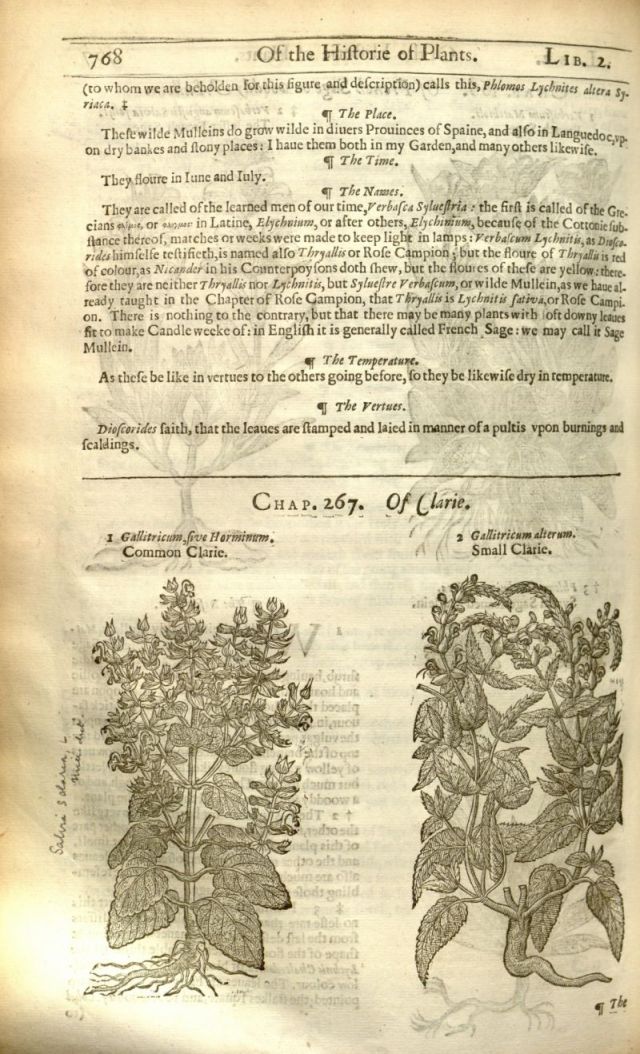
Courtesy Wikimedia Commons, public domain
Hi-res image: File:Salviasclarea.JPG - Wikimedia Commons
Clary [clarie] or Salvia sclarea [Gallitricum] was a common plant in New Netherland. According to the Flemish herbalist Rembert Dodoens and his English counterpart, John Gerard, there were four main types of clary: common clary, small clary, wild clary and anvil clary. These plants grew in the wild and according to Adriaen van der Donck in his 1655 Description of New Netherland were also cultivated in the New Amsterdam herbal gardens, and thus likely grew in the Kierstede’s medicinal garden behind their Apothecary on Pearl Street. While the plant looked attractive when it flowered, the primary purpose for planting clary was its medicinal properties, including pain relief. According to Dodoens and Gerard, this plant could be mixed with honey to “taketh away pain” in the eyes, relieve joint swelling and reduce bodily fluids.
Reference: Clary - Gallitricum, as shown in John Gerard, Generall Historie of Plantes, Wikimedia Commons, 1636, public domain; Source: Biodiversity Heritage Library - Meta

Courtesy Wikimedia Commons, public domain.
Hi-res image: File:The herball, or, Generall historie of plantes (Page 768) BHL8437526.jpg - Wikimedia Commons

